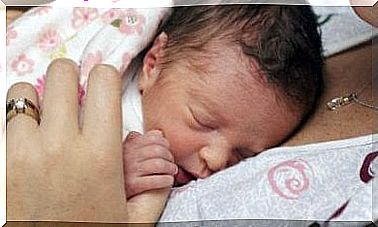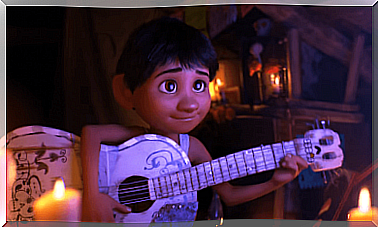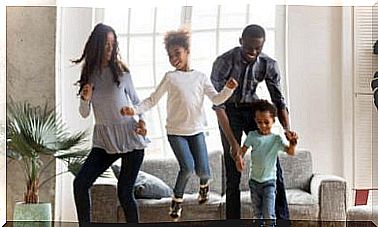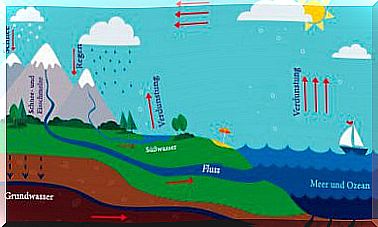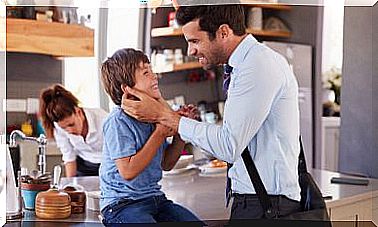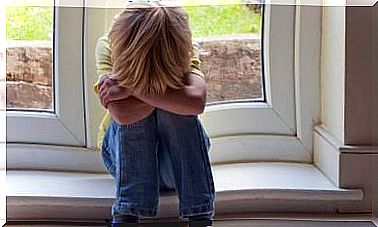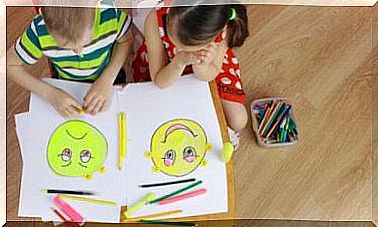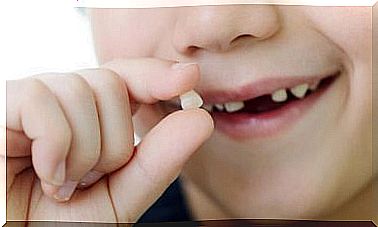Babies’ Willingness To Jump
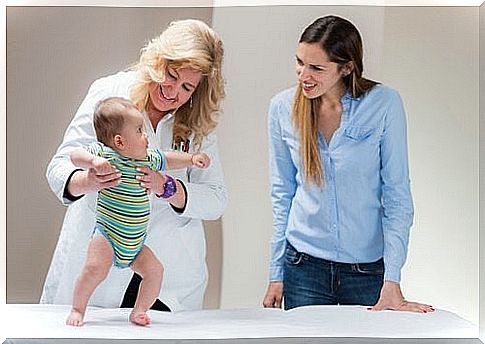
Reflexes in babies are physical responses to certain stimuli. The so-called readiness to jump is a posture that the baby adopts in certain situations. Reflexes are fundamental properties of a developing nervous system.
These baby reactions appear in the first few months of their lives. They go away again when the brain is mature.
The best-known reflexes of babies are the sucking reflex, the screaming reflex and the lesser known but equally important reflex of readiness to jump .
What does readiness to jump mean?
The reflex to be ready to jump is a protective reaction. It usually sets in at around 5 months.
This reflex shows up when you hold the baby under the armpits in a horizontal position and then suddenly lower it. Kind of like throwing it on a surface.
The reaction is for the baby to spread its arms to catch the theoretical fall. This reflex lasts a lifetime.
Why do babies have this reflex?
The readiness to jump is one of the primitive reflexes. They are controlled by the central nervous system and thus serve to ensure survival in the first few years of life.
The primitive reflexes begin in the womb and then develop according to the age of the child. They are triggered by external stimuli from the environment.
They are, so to speak, involuntary movements that get lost over time.
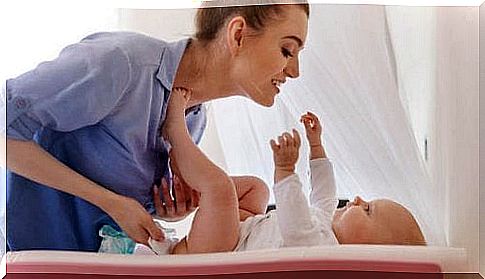
This is how the readiness to jump is tested:
Your pediatrician can test how well your child’s reflexes are developed monthly.
But you can also tell whether your baby is already showing the reflex of willingness to jump.
- Place your child on a surface where their feet and body can lie comfortably. Observe the immediate straight posture and the slight external rotation of the legs. This is easy to see from the 5th month.
- To recognize that the child is ready to jump from the side, you can sit down so that their legs are hanging down. Then you gently nudge it on one side and watch the reaction. It will quickly stretch its arm out to avoid falling. Babies have this reflex when they are around six months old.
- A forward reaction can be seen when the child is pushed forward slightly. Then it pulls the arms in front of the body to support itself again. You can usually observe this level of willingness to jump between the 7th and 8th month.
- This reflex also reaches backwards. Then the baby extends arms and hands as well. In addition, it then tilts its shoulders backwards.
It is good to regularly check the development of these reflexes. In this way you can assess what your baby can do and what stage his motor skills and nervous system are at.
Lack of reflexes in children
The lack of various reflexes in babies can have several causes. For one, it can be the result of a neurological injury. On the other hand, the reason can be a weakness of the musculoskeletal system.
This clinical picture shows the following signs:
- Children who always lie down and cannot sit up straight.
- Reduced muscle strength, which is reflected in a lack of coordination. As a result, for example, the baby often falls.
- The child has difficulty focusing on something, for example while watching TV. A complication of this can then be a learning disability. This often shows up when the child starts school.
- It is difficult for the child to go to the bathroom.
- Working with your hands or eating is difficult. Fine motor skills are generally poor.
- The babies are very nervous, scared or very attached to their parents.
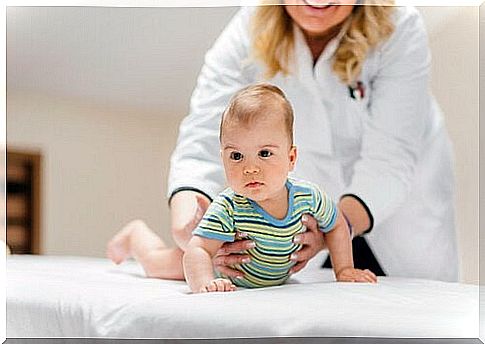
It is very important to check your child’s development regularly. The earlier you and the doctor discover developmental disorders, the sooner you can counteract them. There are special therapies for this, which serve to promote the reflexes or the respective abilities.
Games can also be an excellent alternative. This simulates movements aimed at developing these stimuli.
Having a baby showing reflex behavior guarantees that the nervous system and its movements will develop properly.
To take a close look at whether and when these reflexes are there and to support them if necessary serves the health and development of your child.
